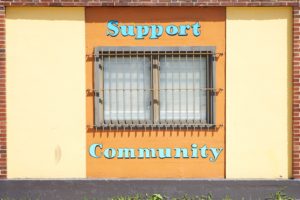Since the creation of Medicaid services in 19651, states have used federally matched funding from the Centers for Medicare & Medicaid Services (CMS) to support their low-income residents. To receive the federal funding, states were required to meet a minimum of services that includes but is not limited to; inpatient hospital, outpatient hospital, nursing facilities, home health, physicians, rural health clinics, federally qualified health centers, laboratory and X-ray, family planning, and tobacco cessation counseling for pregnant women2. There are also optional benefits that CMS will allow federal funding to cover, such as physical therapy, hospice, case management, and private duty nursing. It was left to the states to decide on optional benefits. Still, at the same time, states did not have much flexibility outside of the mandatory or suggested optional benefits until the section 1115 demonstration waivers were offered. The waivers intended to allow states to use Medicaid funding to demonstrate projects that are founded by the Secretary to be likely to assist in promoting the objectives of the Medicaid program3. State’s must individually apply for the 1115 waiver, and they are approved on a case-by-case basis.
In June of 2016, the state of North Carolina submitted an 1115 application with an innovative idea to upstream health among the Medicaid beneficiaries by supporting community human service organizations that provide housing, transportation, food, interpersonal violence services. In the fall of 2018, North Carolina received notice that their application was approved for a five-year cycle4. The North Carolina Department of Health and Human Services (NC DHHS) is now on the pathway to integrating a beneficiary’s physical environment and personal health in ways it has never done before. Community organizations addressing these non-medical drivers of health could now, under the 1115 waiver, be reimbursed for the services they already provide to Medicaid beneficiaries with the potential to increase capacity or geographical reach.
As a health educator in North Carolina, I am excited to see the political will and financial resources dedicated to upstreaming health. The conversations and interventions around these public health topics, at best, have been poorly supported or funded through inconsistent political leadership or grant funding. The 1115 waiver will allow fixed funding to providers of human services. Previously, these providers were excluded under the medical model due to their status as non-qualified healthcare providers.
During the next few years, decisions will be made that define who these new reimbursed human service providers will be. It is critical that the public health sector remains close to these conversations and helps guide the dialogue to advocate for the role of a health educator as a qualified professional. One of the first steps in doing this would be to provide clear role definitions and examples of the work that demonstrates the proficiency of health educators. Currently, the role of a health educator is varied and expansive. These generalities have done our profession a disservice, as often we cannot easily define our value to systems. Even with some of the more developed roles of health educators such as tobacco cessation counselors, patient navigators, program managers, and community workers, there is little evidence about the impact or effect of the health educator within the project.
With this new funding structure under North Carolina’s 1115 waiver the opportunity to redefine what a qualified human service provider is and we must amplify our voices as public health professionals by standardizing the current roles of health educators and proving clear evidence of the impact of the health educator within the provided health services and countries health landscape. The health educator is perfectly trained to support the goal of CMS’s 1115 waiver, which is to coordinate strategies to address specific health determinates that promote upward mobility, greater independence, and improve the quality of life among individuals3.
- Health Care Payment Reform Creates Opportunity for Health Educators - January 14, 2020
- Social Security Amendments of 1965. (1965). Public Law 89-87 Retrieved from https://www.govinfo.gov/content/pkg/STATUTE-79/pdf/STATUTE-79-Pg286.pdf#page=1 [↩]
- Mandatory & Optional Medicaid Benefits. (n.d). Medicaid.gov Retrieved from https://www.medicaid.gov/medicaid/benefits/list-of-benefits/index.html [↩]
- About Section 1115 Demonstrations. (n.d.), Medicaid.gov Retrieved from https://www.medicaid.gov/medicaid/section-1115-demo/about-1115/index.html [↩] [↩]
- North Carolina’s Medicaid Reform Demonstration (n.d). Medicaid.gov Retrieved from https://www.medicaid.gov/medicaid/section-1115-demo/demonstration-and-waiver-list/?entry=38522 [↩]





Pingback: Intervene Upstream Issue 2: Creativity & Social Work » Intervene Upstream, the online peer-reviewed public health publication for graduate students